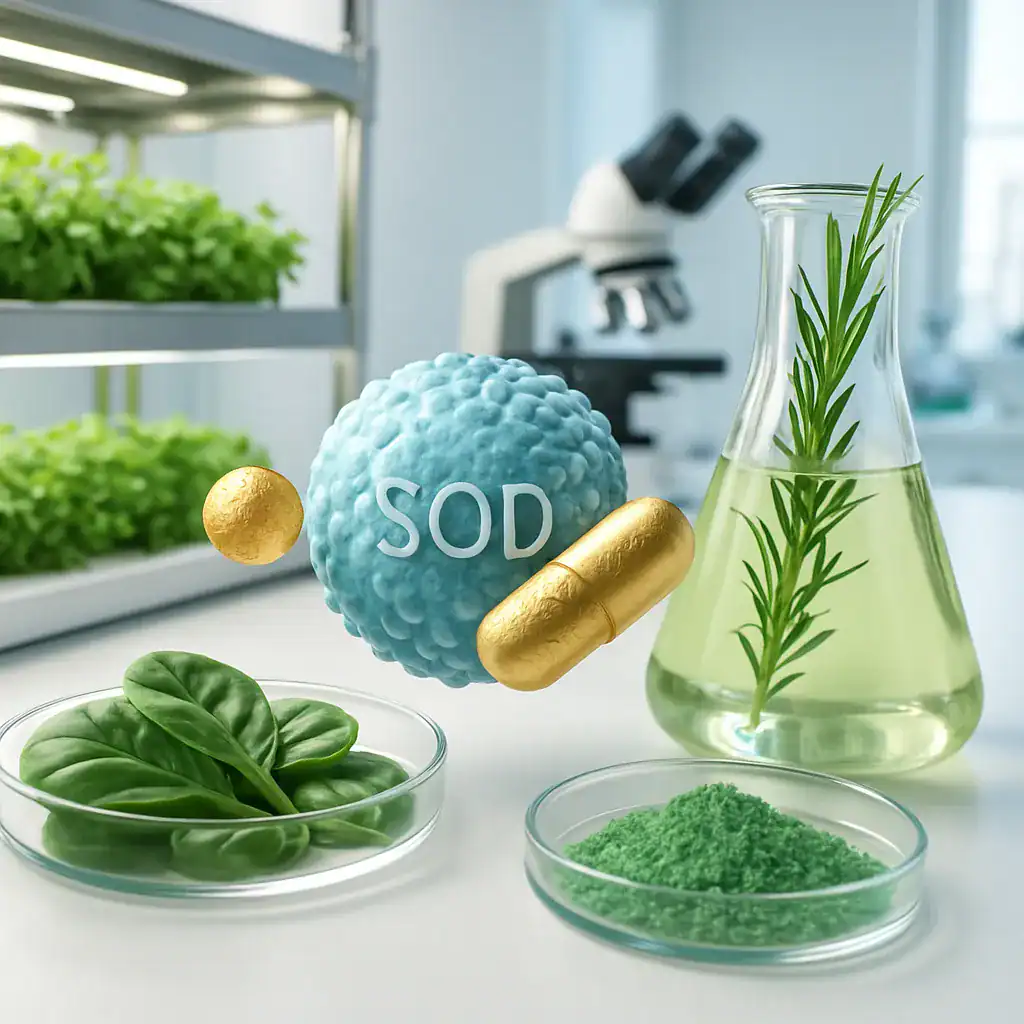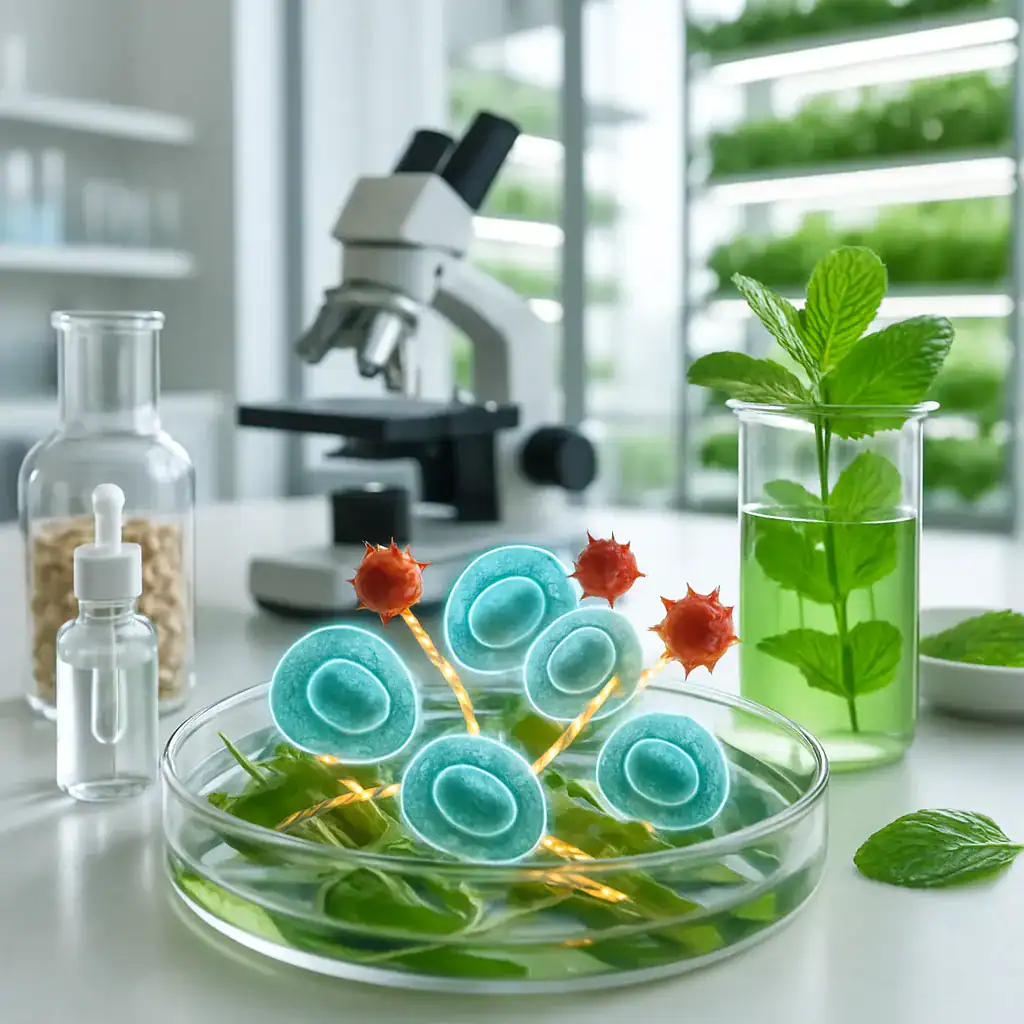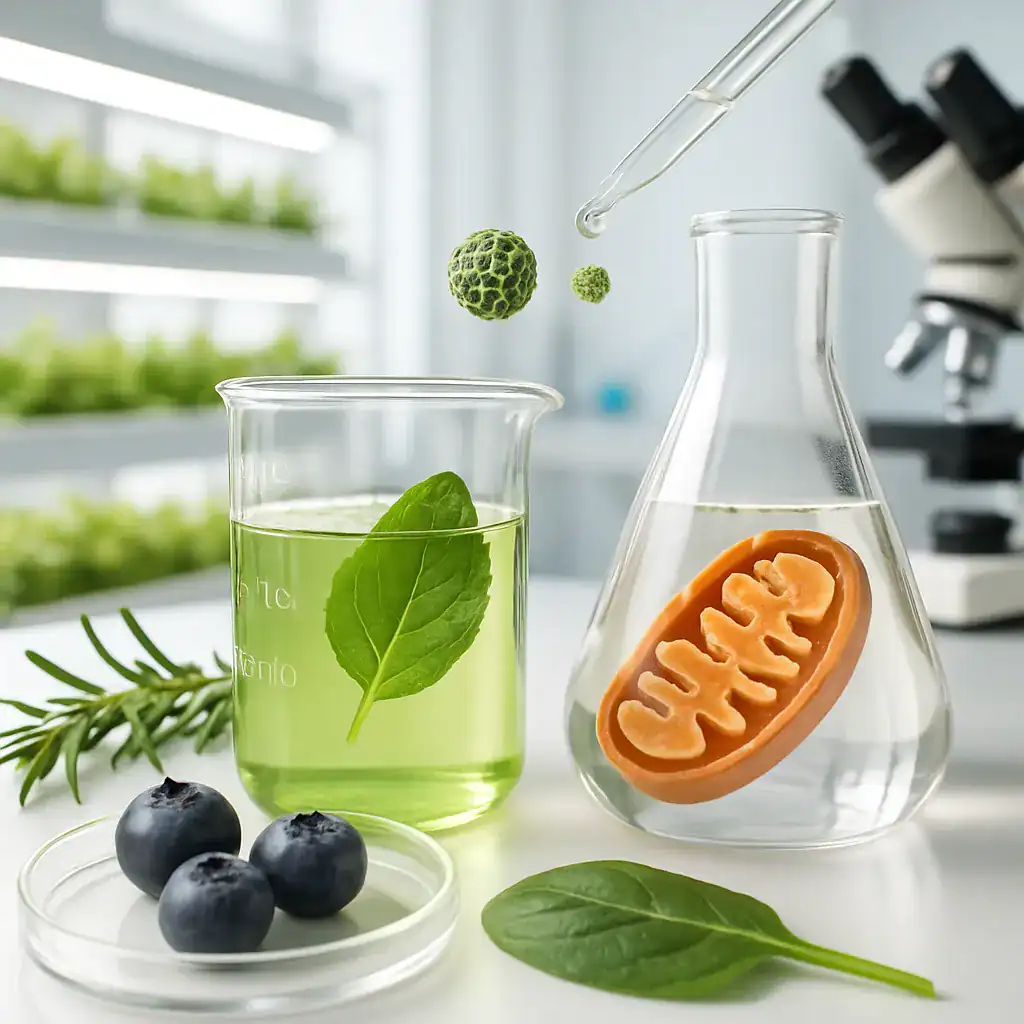Superoxide dismutase longevity biomarker: what is it and why does it matter?
Understanding how this biomarker reflects your body’s antioxidant defence and healthspan
At its core, the superoxide dismutase longevity biomarker represents how effectively your body neutralises superoxide, a reactive oxygen species that can damage cells. SOD stands for superoxide dismutase, an essential enzyme in your antioxidant defence system that converts superoxide into hydrogen peroxide and oxygen. This process helps limit cellular damage from reactive oxygen species and supports resilience against oxidative stress. When this balance is strong, you may see less damage from lipid peroxidation, fewer instances of DNA damage, and healthier energy production in mitochondria. For physical health, higher SOD activity can translate to better endurance, quicker recovery after exercise, and reduced fatigue. For mental health, it may relate to clearer thinking and reduced risk of cognitive decline as neural tissue experiences less oxidative damage, with evidence linking higher SOD activity to lower risk of neurodegenerative diseases. In many studies, robust SOD activity aligns with longer lives and lower risk of age-related diseases, linking to a broader concept of a healthier life span trajectory. Measuring this biomarker offers a practical glimpse into your body’s antioxidant defence capacity and how lifestyle choices—like regular activity, a diet rich in antioxidants, and adequate sleep—can support them.
Our Key Areas of Expertise




In-Depth Analysis of the superoxide dismutase longevity biomarker in production and health outcomes
This section integrates how the superoxide dismutase longevity biomarker informs production choices at PhNóva, including Exosomes Nutra and Vertical Farming Botanics, and how these choices translate to tangible health outcomes. By linking laboratory insights with formulation and delivery strategies, we illustrate a pathway from assay results to consumer benefits and long-term wellbeing for older adults and broader populations. The discussion weaves across cellular mechanisms, product development, and public health relevance, drawing on a broad set of keywords to reflect current science and industry practice.
Biological links between the biomarker and antioxidant defense
At the core, reactive oxygen species and free radicals drive cellular challenges that can lead to oxidative damage if defenses falter. The mitochondrial superoxide pool is a critical source of oxidative load, influencing DNA oxidative damage and subsequent changes in genome integrity. These processes modulate gene expression patterns that affect cellular resilience, vascular function, and cognitive outcomes over time. In aging research, robust SOD activity contributes to better maintenance of metabolic balance and stress resistance, with implications for long-term health trajectories in the general population and in studies of aging phenotypes. Understanding these links helps production teams prioritize stabilised enzymes, protective matrices, and delivery systems that preserve antioxidant capacity through processing and shelf life.
From bench to production: measurement and formulation
Translating biomarker insights into products begins with reliable measurement. An assay kit for SOD activity informs batch release, quality control, and formulation adjustments. In parallel, monitoring plasma biomarkers of oxidative status provides a practical readout for product impact in human trials and consumer use. Formulation strategies may leverage extracellular superoxide dismutase or SOD mimetics to complement endogenous defenses, particularly in contexts where enzyme stability or bioavailability poses challenges. Delivering active components via plant-derived nanocarriers or extracellular vesicles aligns with PhNóva’s Exosomes Nutra platform, enabling targeted delivery while minimizing degradation in the digestive tract. These approaches also support interplay with vascular and endothelial environments, where components may interact with vascular endothelial cadherin pathways and extracellular matrices to sustain functional integrity.
Health outcomes in aging populations and disease risk
In real-world terms, enhanced antioxidant defense can translate to improved physical functioning, slower cognitive decline, and potentially reduced risk of chronic diseases. For older adults, maintaining robust SOD-related defense is associated with better resilience to daily stressors, improved endothelial function, and preserved mobility. By integrating biomarker data with health outcomes, researchers can better stratify risk and tailor nutraceutical strategies that support healthy aging, including interventions aimed at reducing DNA oxidative damage and supporting mitochondrial health across tissues. This alignment between production science and population health underpins the value proposition of SOD-focused formulations in functional foods and biomedical devices.
Delivery platforms and production strategies for longevity benefits
PhNóva’s Exosomes Nutra and Vertical Farming Botanics offer synergistic routes to deliver SOD-related benefits. Encapsulation within extracellular vesicles can protect sensitive enzymes and improve mucosal uptake, while plant-derived substrates provide scalable and natural sourcing. Attention to glutathione peroxidase pathways and related antioxidant systems helps harmonize dietary components with enzyme activity, potentially influencing DNA oxidative damage risk indirectly. The use of assay kit-driven quality controls ensures consistency, while integrative strategies may incorporate SOD mimetics to mimic endogenous defenses and prolong activity in challenging physiological environments. In manufacturing, adherence to controlled fermentation, drying, and stabilization steps preserves activity and aligns with consumer expectations for natural, additive-free products. This approach supports measurable impacts on plasma biomarkers of oxidative status and strengthens the link between product philosophy and health outcomes.
Production considerations and comparative overview
Below is a concise table contrasting major SOD forms and their relevance to longevity-focused products.
| Isoform | Location | Primary Role | Relevance to Longevity |
|---|---|---|---|
| Cu/Zn SOD | Cytosol | Neutralizes superoxide in cytoplasm | Maintains cellular redox balance |
| MnSOD | Mitochondria | Protects mitochondrial components | Critical for mitochondrial health |
| EC-SOD | Extracellular matrix | Protects extracellular structures | Influences vascular health |
- Integrate robust measurement by assay kit to guide formulation adjustments
- Consider delivery via extracellular superoxide dismutase–inspired platforms to enhance bioavailability
- Monitor plasma biomarkers to assess real-world health outcomes
R&D Consultancy
Discover how PhNóva’s R&D Consultancy can help transform your idea into a market-ready solution — with expert support in formulation, regulatory compliance, and innovative delivery systems to give your product a competitive edge.
FAQ's about Superoxide dismutase longevity biomarker: what is it and why does it matter?
What is the superoxide dismutase longevity biomarker and why is it central to aging research?
The superoxide dismutase longevity biomarker indicates how effectively your body neutralises superoxide radicals, a key measure of the antioxidant defence network. SOD enzymes limit oxidative stress by catalyzing the conversion of superoxide to hydrogen peroxide and oxygen, reducing chain reactions that drive lipid peroxidation and DNA damage. In many studies, higher SOD activity aligns with healthier aging and lower risk of vascular and neural decline, suggesting a broader impact on life span and resilience. Measuring this biomarker supports lifestyle and formulation choices that may strengthen cellular protection over time.|
How do PhNóva production choices influence SOD-related outcomes for older adults?
PhNóva’s Exosomes Nutra and the Exosome-based delivery platform can influence the interpretation of the biomarker by stabilizing SOD-derived signals and enhancing uptake of bioactive compounds. When monitoring impact, laboratories often measure plasma biomarkers of oxidative status and antioxidant capacity to track changes in humans. For older adults, highlighting extracellular superoxide dismutase activity in plasma can reveal improvements in extracellular redox balance and vascular protection. This integrated approach supports product development in our Exosomes Nutra line and adds real-world relevance to longevity strategies.|
What are the main differences between Cu/Zn SOD, MnSOD and EC-SOD in longevity contexts?
Understanding the diversity of SOD isoforms helps designers tailor contributions to longevity. SOD mimetics are small molecules that emulate endogenous SOD activity, offering a supplementary route when enzyme stability or bioavailability is limiting. In human biology, the cytosolic Cu/Zn SOD isoform has a primary role in detoxifying cytosolic radicals, while mitochondrial MnSOD protects the mitochondrial matrix, and extracellular EC-SOD guards connective tissues. Balancing these forms informs formulation strategies that maximise systemic and tissue-specific antioxidant effects while preserving safety.|
How can combining SOD-focused enzymes with other antioxidants improve vascular health?
Effective SOD-focused formulations often work in concert with other antioxidant enzymes. For example, pathways involving glutathione peroxidase convert hydrogen peroxide to water, reducing residual oxidative burden. In vascular contexts, vascular endothelial cadherin mediates cell–cell junctions that influence endothelial barrier function. Strengthening these interactions supports endothelial function and microvascular health, potentially improving nutrient delivery and cellular resilience. PhNóva emphasizes synergy between delivery platforms and enzyme stability to sustain antioxidant defense across tissues and over time.|
Why is DNA oxidative damage a useful measure when assessing nutraceuticals aimed at longevity?
Tracking DNA oxidative damage provides a tangible readout of how lifestyle, diet, and nutraceuticals influence genomic stability. SOD activity reduces primary oxidative hits, but long-term protection depends on complementary systems and repair processes. Consumers may notice steadier energy, better recovery, and slower cognitive aging when oxidative insults are limited. In studies, individuals with robust SOD-related defenses tended to exhibit less DNA oxidative damage and improved metabolic regulation. Our product strategies aim to support these processes via stabilized enzymes, targeted delivery, and shelf-life protection.|
How does mitochondrial health intersect with SOD-based longevity strategies?
Maintaining mitochondrial health is central to SOD-related longevity because mitochondria are a major source of reactive oxygen species. By supporting enzyme stability, proper delivery, and balanced redox signaling, products from PhNóva may help preserve mitochondrial function, reduce unnecessary respiration stress, and improve energy production. Real-world results may include better physical functioning, less fatigue, and resilience to daily challenges in aging populations. Continuous quality control, assay-based release testing, and plasma biomarker monitoring ensure consistency from production to consumer.|
Can model organisms like Drosophila or Caenorhabditis elegans inform human SOD therapies?
Model organisms such as Drosophila melanogaster and Caenorhabditis elegans have guided the development of SOD-focused interventions. These systems illuminate how gene expression responses to oxidative stress relate to longevity phenotypes, offering clues about optimal dosing, delivery, and safety. While translating findings to humans requires clinical validation, the core biology supports strategies that enhance antioxidant defence without disrupting signaling pathways. PhNóva leverages these insights to shape evidence-based nutraceuticals and biomedical devices for aging populations.|
Get in Touch with PhNóva
Have questions or need expert guidance? Contact us today — our team is ready to assist you with tailored solutions for your formulations.

04/09/2025






